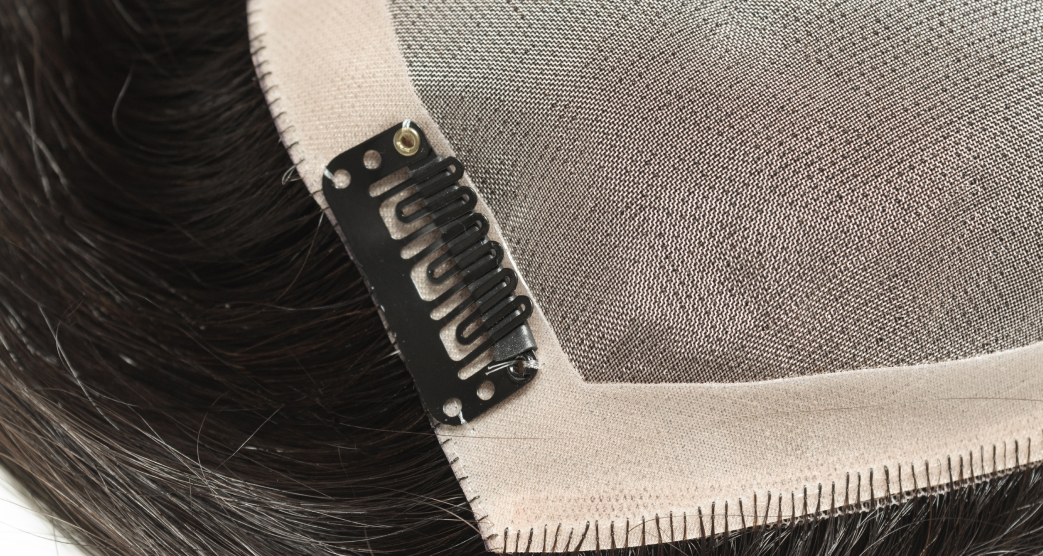Men’s Hair Pieces

Regrettably, men’s hairpieces or prosthetics have endured a negative reputation for well over a century. This unfavorable perception stems from factors such as subpar craftsmanship, limitations in attachment methods, the societal stigma historically attached to men expressing concern about their appearance, and the way in which traditional hairpieces or toupees have been caricatured in the media, often portraying wearers as objects of ridicule, casting them as exceedingly insecure individuals, or implying that they should feel ashamed of “concealing” their hair loss or attempting to “deceive” others about their hair situation. This portrayal not only characterized men suffering from a genetic condition over which they have little control as “inferior,” but also depicted them as even more pitiable if they chose to seek solutions to restore their lost hair.
A hair prosthesis, in essence, is no different from a glass eye, an ear prosthesis, or a front tooth replacement, among other prosthetic devices. While none of these prostheses are essential for basic physical functioning, they offer solace to individuals who have undergone traumatic experiences, such as the loss of an eye, an ear, or, in this case, their hair. These individuals may no longer feel at ease either when viewing themselves in a mirror or when interacting with the world.
Fortunately, partly owing to the assistance of social media, as well as the fact that today’s men’s hair systems can appear extremely natural with proper maintenance and consumer education on effective purchasing of these hairpieces, men suffering from hair loss of all ages can confidently wear hair that is virtually undetectable and regain the confidence they deserve when facing the world.
Types of Men’s Hairpieces:
Male hairpieces or hair systems come in various types, each with distinct features and characteristics. It’s important to understand the key elements that make up these systems, including the base materials, density options, and ventilation methods for each type.
Lace Systems:
Lace systems are renowned for their natural appearance and breathability, offering different options to cater to individual needs.
Base Materials for Lace Systems:
Lace systems primarily feature lace material for their bases, with French lace and Swiss lace being the most common options. French lace provides a delicate and invisible appearance, while Swiss lace is finer and offers an even more undetectable hairline.
Lace Base Density Options:
Lace systems come in different densities to suit preferences, ranging from light density for a subtle look to heavy density for added volume.
Ventilation Methods for Lace Systems:
Lace systems can use ventilation methods such as single-knot and double-knot techniques. In single-knot ventilation, individual hair strands are knotted into the lace base, providing a natural appearance. Double-knot ventilation involves knotting each hair strand twice, resulting in increased density and fullness.
Hybrid Systems:
Hybrid systems combine multiple base materials to provide a balance of durability, natural appearance, and breathability.
Base Materials for Hybrid Systems:
Hybrid systems often blend materials like lace for a natural hairline and polyurethane (PU) or monofilament for durability and styling flexibility.
Ventilation Methods for Hybrid Systems:
Hybrid systems can utilize various ventilation methods, including single-knot or double-knot ventilation for the lace portion, achieving natural looks. Injection ventilation is employed for the PU or monofilament sections, providing security and versatility in hair direction and styling.
Polyurethane (PU) Bases:
Polyurethane bases offer a range of choices in terms of density and ventilation methods, allowing for a customized and discreet solution.
Poly Base Density Options:
Polyurethane bases come in standard, thin, and ultra-thin densities, catering to various preferences and needs.
Ventilation Methods for Poly Bases:
Polyurethane bases can employ ventilation methods such as V-looped, injection, single-knot, and double-knot techniques for different looks and functionalities. V-looped ventilation creates a natural hairline, single-knot ventilation provides both security and a natural appearance, while double-knot ventilation results in added volume.
Monofilament Systems:
Monofilament systems are prized for their breathability, comfort, and natural appearance.
Monofilament Base Material:
Monofilament systems feature a base material made of fine, transparent mesh that mimics the look of a natural scalp.
Monofilament Base Density Options:
Monofilament systems offer light, medium, and heavy density options, allowing individuals to choose the desired thickness.
Ventilation Methods for Monofilament Systems:
Monofilament systems can use single-knot and double-knot ventilation methods for achieving natural and versatile styling.
It’s worth noting that partial hairpieces can now be purchased, which can be tailor-made to exact specifications for receding hairlines or bald spots. This eliminates the need for men with limited hair loss to be forced to wear an entire wig or shave off their remaining natural hair. These custom solutions provide a more flexible and precise way to address specific hair loss concerns.
In conclusion, the wide variety of men’s hairpieces, each with its own unique base materials, density options, and ventilation methods, ensures that individuals can find a solution that aligns perfectly with their preferences and requirements. Whether seeking a less dense look, breathability, durability, or volume, these choices enable men to regain confidence and comfort in their appearance. Consulting with a reputable provider or professional is essential to select the perfect system that aligns with individual needs, delivering the desired appearance and comfort for a more confident and fulfilled life.